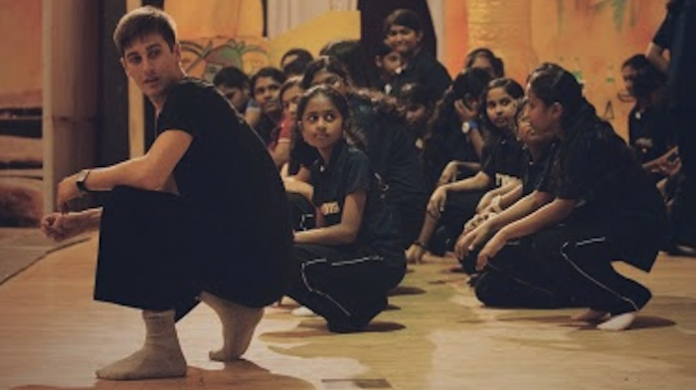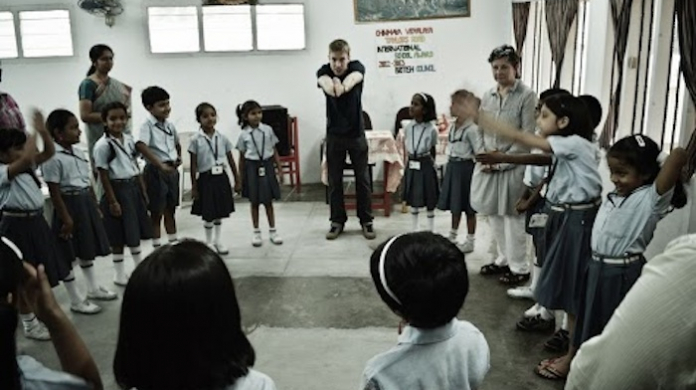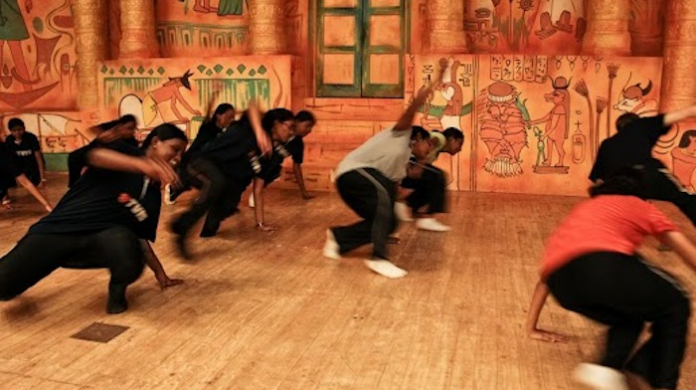The trip so far has been really exciting and really exhausting! Laura [Alos] and Cathy [Gomez] have managed to put together a trip that any other arts officer in the world would die for. Seriously, we're covering five cities in ten days, which is amazing, and we've already met Michael Clarke Company, Sadler's Wells, Chisenhale Dance, lots of people at the Place, we've already seen two performances... There are some really interesting conversations going on at the Place about a longer term collaborative thing about dance education in India, so that has been interesting.
I'm looking forward to my visit to Edinburgh and Glasgow, where we'll meet Creative Scotland and Scottish Dance Theatre, and the South Asian Dance Summit in Bournemouth, which will be really great for me because it'll help me see which South Asian performers could tour back in India...
The UK dance sector is very different to the India dance sector. There's good work going on in both countries, but here it's a little more joined up, a little more visionary, a little more collaborative, and a lot more organised! Here, you can easily see dance companies working together – The Place, Sadler's Wells, Dance Umbrella, everyone coming together and doing something, and that just doesn't happen in India. Both places have their own pros and cons, but what I'm really interested in taking back with me is how much artist and community development is at the heart of everything they do. I mean, they want to earn money, everyone is in it to get something, but they are also concerned more for the artistic value of it than the commercial aspect of it – and that's really a contrast to where India is. Of course, artistic development is at the heart in India, too, but because surivial is so hard, what it boils down to is what will make the most money.
Having said that, there are things that UK companies could learn from Indian ones, too: in India, 90% of contemporary dance companies have two wings, one that focuses on cotemporary work and research, and one that focuses on commercial work. Bollywood is still massive in India, so the commercial wing will do loads of Bollywood gigs for corporations, for events, for weddings, and the money that they get from that goes back into development of the other work, because there's no government funding in India. So there are things to learn on both sides, and I think that through working together we'll see how both countries can really benefit.
There are a lot of things that we should share. The one thing I'd really like to see happening in India is the companies being a little more joined up. I'd like to see Nridarutya [dance company] working open-heartedly and open-mindedly with, say, Dance Worx. And that's started happening but only in the management sector not in the creative sector. So, arts management courses etc, they are joined up. But, creatively, you know how Akram Khan and Sidi Larbi Cherkaoui can just work together and create a wonderful piece, there is no apprehension about working together, they are so open minded. And the UK has a national dance network and consortiums... something like that could be taken there, not to follow it blindly, but to help Indian companies work together. India is huge, ten times bigger than the UK, and it's very regional. Economically and creatively, if they could join up a bit, a) we're developing and creating new audiences for different dance, b) we're getting more work in different regions, and c) we're building a national presence and letting people know what's going in India. There's a lot of competition, it's a fight to surivve. Everyone is very closed... it's not their fault, culturally and historccally Indians are like that because we have faced cross-water terrorism, internal terrorism, partition... we're used to defending our property, and we need to learn how to be more open. Here, everyone is very depednent on Arts Council funding and grants etc... Kenneth [Tharp] at the Place was saying this is something we can learn from India – having a commercial and an artistic wing, to become self-sufficient and not to rely on government money.
There's so much work going on here, and I'm so inspired by that! The kind of projects at the Place are inspiring – audience development, artistic development, new work, new artists, administration for artists who cant afford to do it themseles... it's so inspiring to see one organisation doing that. There's a lot of ideas to take back and a lot of projects that we could feed into... It's also great to see Europoean artists all coming here and working together – that's unheard of in South Asia. A Pakistani artist wanting to work in India will not get a visa. We faced that with Akram Khan's tour. The political limitations are so strong, it curbs even the desire of the artist to do things across boundaries/borders because it's too complicated.
Neha Jaiswar was on a two-week trip around the UK with the British Council Theatre and Dance Team. She was talking to Eleanor Turney.


